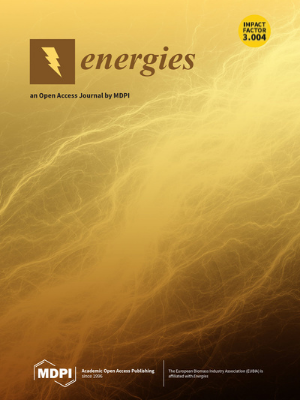利用部分放电数据和支持向量回归估算锂离子电池健康状况的程序
IF 3.2
4区 工程技术
Q3 ENERGY & FUELS
引用次数: 0
摘要
电池老化是一个复杂的现象,精确的健康状态(SoH)监测对于有效的电池管理至关重要。本文介绍了一种基于支持向量回归 (SVR) 的数据驱动型 SoH 估算方法,该方法利用了从完全放电和部分放电容量曲线以及电池温度数据中构建的特征。文章深入讨论了从不同电压区间构建的新特征。此外,还分析了三种特征组合,展示了它们在不同电压范围内的功效变化。使用从 2 到 3.4 V 全电压区间构建的全放电容量曲线获得了成功的结果,测试集的平均 R2 值达到了 0.962,从而展示了所选 SVR 策略的适当性。最后,将根据全电压范围构建的特征与根据 10 个小电压范围构建的特征进行了比较。不同电压范围的平均 R2 值介于 0.939 和 0.973 之间,显示了类似的成功。这表明所开发的模型在现实世界中具有实用性。建议模型的调整和评估是通过丰田公司创建的大量数据集进行的,该数据集由 124 块磷酸铁锂电池组成。本文章由计算机程序翻译,如有差异,请以英文原文为准。
State of Health Estimation Procedure for Lithium-Ion Batteries Using Partial Discharge Data and Support Vector Regression
Battery aging is a complex phenomenon, and precise state of health (SoH) monitoring is essential for effective battery management. This paper presents a data-driven method for SoH estimation based on support vector regression (SVR), utilizing features built from both full and partial discharge capacity curves, as well as battery temperature data. It provides an in-depth discussion of the novel features constructed from different voltage intervals. Moreover, three combinations of features were analyzed, demonstrating how their efficacy changes across different voltage ranges. Successful results were obtained using the full discharge capacity curves, built from the full interval of 2 to 3.4 V and achieving a mean R2 value of 0.962 for the test set, thus showcasing the adequacy of the selected SVR strategy. Finally, the features constructed from the full voltage range were compared with ones built from 10 small voltage ranges. Similar success was observed, evidenced by a mean R2 value ranging between 0.939 and 0.973 across different voltage ranges. This indicates the practical applicability of the developed models in real-world scenarios. The tuning and evaluation of the proposed models were carried out using a substantial dataset created by Toyota, consisting of 124 lithium iron phosphate batteries.
求助全文
通过发布文献求助,成功后即可免费获取论文全文。
去求助
来源期刊

Energies
ENERGY & FUELS-
CiteScore
6.20
自引率
21.90%
发文量
8045
审稿时长
1.9 months
期刊介绍:
Energies (ISSN 1996-1073) is an open access journal of related scientific research, technology development and policy and management studies. It publishes reviews, regular research papers, and communications. Our aim is to encourage scientists to publish their experimental and theoretical results in as much detail as possible. There is no restriction on the length of the papers. The full experimental details must be provided so that the results can be reproduced.
 求助内容:
求助内容: 应助结果提醒方式:
应助结果提醒方式:


